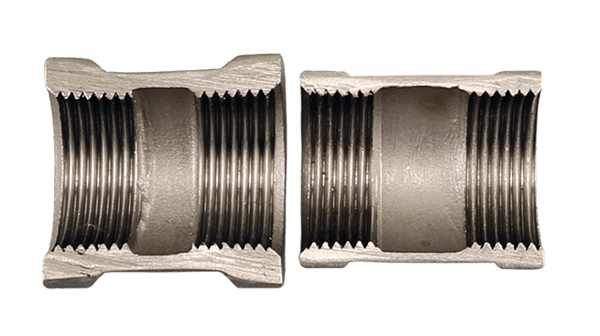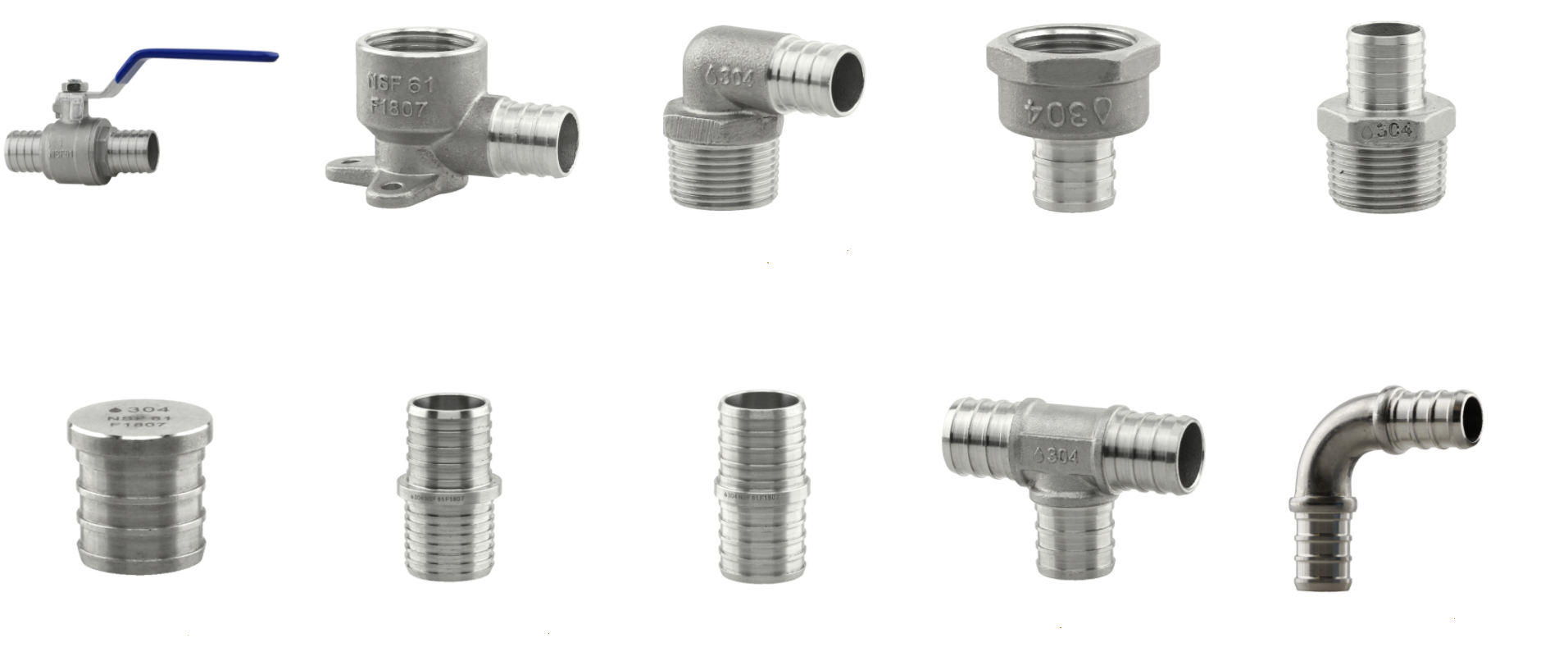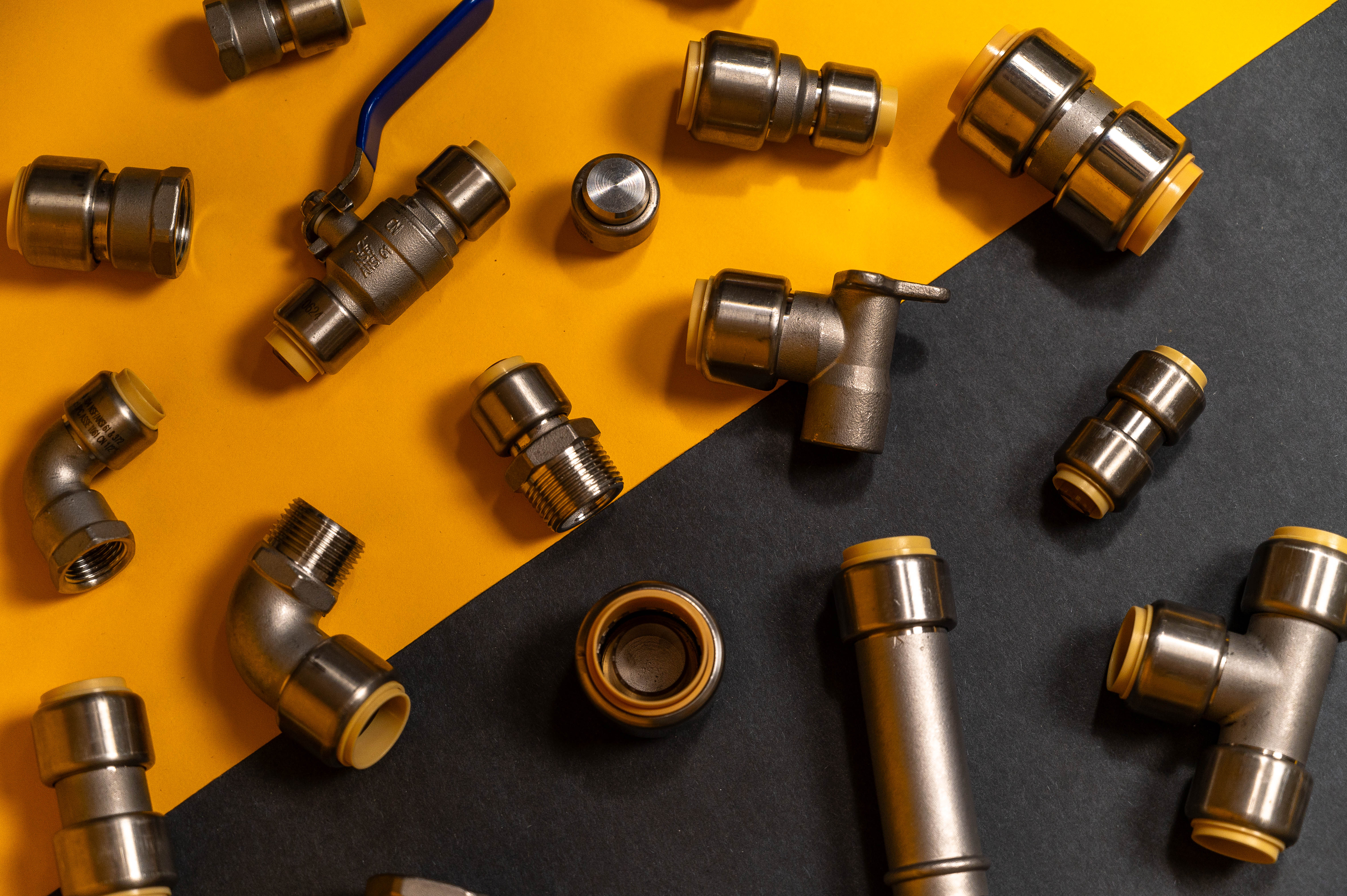Do you know the difference between 304 and 316 fittings? You can’t see or feel the differences between 304 stainless steel fittings and 316 stainless steel fittings, making the markings on the stainless steel fittings the main way to tell them apart.
The main difference between the 304 and 316 is the presence of a chemical element called molybdenum, which gives it a higher degree of resistance to corrosion and oxidation in the 316 stainless steel fittings.
In this blog we will break it down a little further to better understand the difference between 304 stainless steel fittings and 316 stainless steel fittings. We will also add some insight as to where light and heavy pattern stainless steel fittings are typically used.
Stainless Steel Fittings
There are many different types of stainless steel fittings in the market. The 300 series grades are “Austenitic Stainless Steels” which contains high levels of chromium and nickel and low levels of carbon, providing a balance of strength, workability and corrosion resistance. Austenitic Stainless Steels have the highest corrosion resistance and are the most commonly used type of stainless steel.
304 Stainless Steel Fittings
Grade 304 is the most common “General Purpose” Austenitic” stainless steel. It contains between 18 - 20 percent chromium (Cr) and between 8 - 12 percent nickel (Ni), as well as small amounts of carbon (C).png?width=200&height=161&name=SS304C-02%20(angle).png) and manganese (Mn). Its chemical composition, mechanical properties and corrosion / oxidation resistance provide good all-round performance at relatively low cost compared to 316 and is another reason for its popularity and widespread use.
and manganese (Mn). Its chemical composition, mechanical properties and corrosion / oxidation resistance provide good all-round performance at relatively low cost compared to 316 and is another reason for its popularity and widespread use.
304 stainless steel fittings are commonly used to plumb residential, commercial water well and potable water plumbing installations. They are also an excellent choice for many other commercial or industrial non-potable water applications where good corrosion resistance is required. They are not recommended for use in highly sulfuric, hydrochloric, formic and tartaric environments.
316 Stainless Steel Fittings
316 stainless steel has higher nickel and lower chromium content than 304 Stainless Steel. It contains between 16 - 18 percent chromium (Cr) and between 10 - 14 percent nickel (Ni), as well as small amounts of carbon (C) and manganese (Mn). The key difference is the addition of 2 - 3 percent .png?width=241&height=164&name=SS316C-05%20(angle).png) molybdenum (Mo) which makes it more corrosion resistant.
molybdenum (Mo) which makes it more corrosion resistant.
Grade 316 is more expensive; however, it provides higher corrosion resistance, especially against chlorides and chlorinated solutions. 316 stainless is highly recommended in applications where powerful corrosives, chlorides and salt exposure is an issue, since it will last longer than 304.
316 stainless steel fittings are commonly used in Marine/Sea water, Industrial-Commercial Chemical and Pharmaceutical equipment and many other non-potable water applications. They are ideal for all potable water systems and municipal water treatment plants and pump houses. 316 stainless steel fittings are worth the expense if you are looking for superior corrosion resistance.
Light & Heavy Pattern Stainless Steel Fittings
Both 304 and 316 stainless steel fittings are available in a light and a heavy pattern. Knowing the difference will help determine the best product for your application. You can feel the difference in weight and see the difference in their wall thickness.
Light Pattern 304 & 316 Stainless Steel Fittings
The ISO 4144 light pattern fittings are a cost-effective option to the MS SSP-114 pattern, as they provide the same corrosion resistance properties. The ISO 4144 Standard (International Organization for Standardization) allows for a significant reduction in the wall thickness and section diameter, due to the structural strength of stainless steel alloys, while maintaining similar pressure and temperature ratings.
They are an excellent choice for residential or commercial potable water systems. They can also be suitable for a wide range of non-critical applications including industrial and commercial applications, food processing and other non-potable water piping systems.
Heavy Pattern 304 & 316 Stainless Steel Fittings
MSS SP-114 was the first standard specifically written for class 150 SS fittings. It is based on ANSI B16.3 dimensions with further requirements. This is the most comprehensive standard used today. This heavy duty, thick wall pattern provides additional protection against erosion due to extremely high flow rates for increased system life. The tight dimensional tolerances in lay length make the MSS SP-114 pattern fitting the number one choice for industrial and factory installations.
They are commonly used in commercial and industrial piping systems in chemical plants, pulp & paper, petroleum, food & beverage, sanitary, steam systems, and general industrial processes that are subject to various stressors.
In Summary:
It really comes down to application. Now that you are aware of the differences between 304 and 316 stainless steel, the next step will be determining the best pattern; light or heavy, for your application.
Just remember, the investment in either 304 or 316 stainless steel fittings will save you in the long run, by reducing system down time, replacement and maintenance costs over the life of the installation.
The Choice is Yours.
Have further questions about this subject?
Head over to Boshart's Knowledge Base: technical product information, guidelines, and more.





SHARE